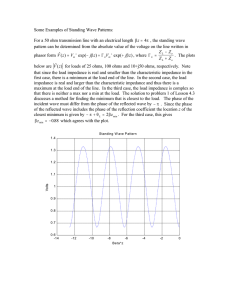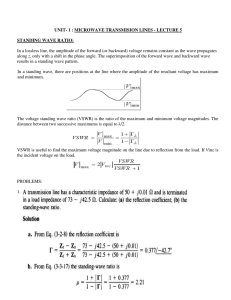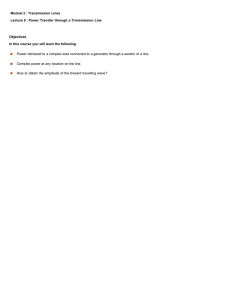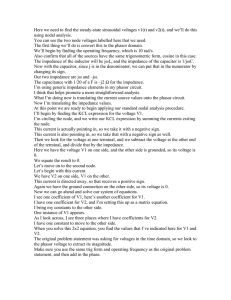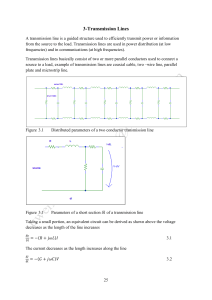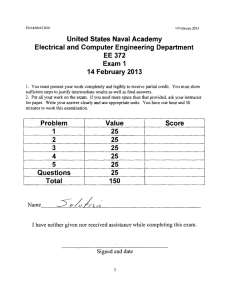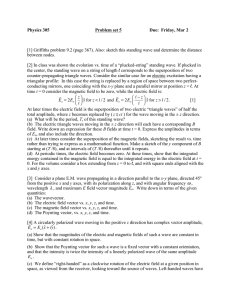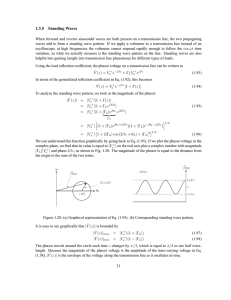NeedToKnow
advertisement
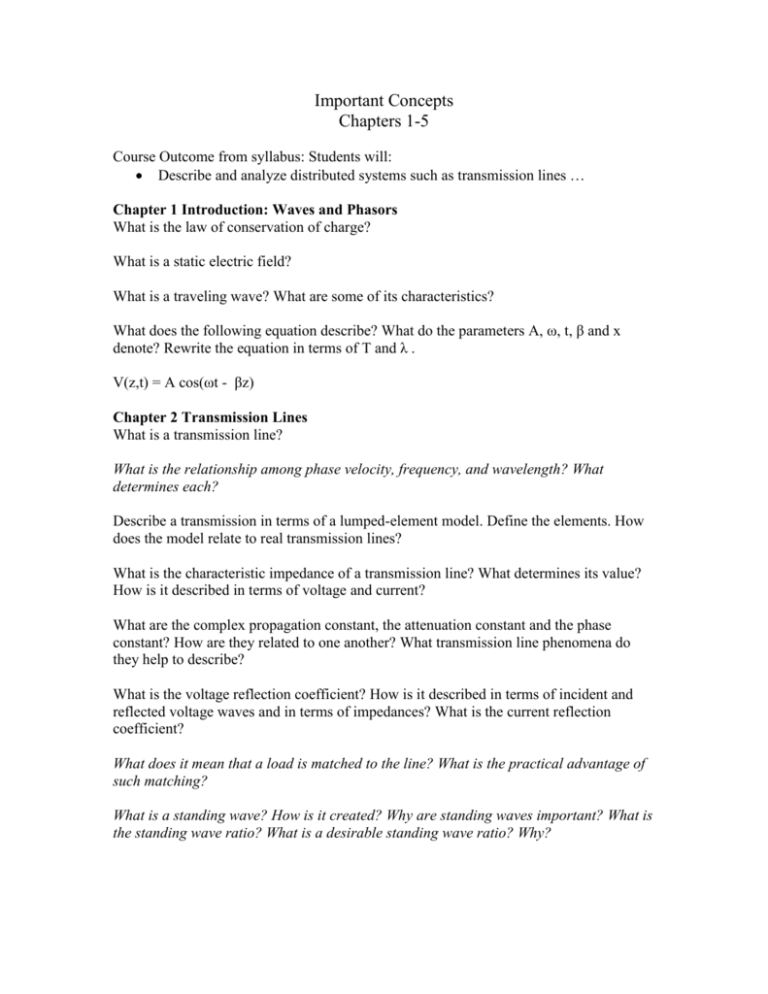
Important Concepts Chapters 1-5 Course Outcome from syllabus: Students will: Describe and analyze distributed systems such as transmission lines … Chapter 1 Introduction: Waves and Phasors What is the law of conservation of charge? What is a static electric field? What is a traveling wave? What are some of its characteristics? What does the following equation describe? What do the parameters A, ω, t, β and x denote? Rewrite the equation in terms of T and λ . V(z,t) = A cos(ωt - βz) Chapter 2 Transmission Lines What is a transmission line? What is the relationship among phase velocity, frequency, and wavelength? What determines each? Describe a transmission in terms of a lumped-element model. Define the elements. How does the model relate to real transmission lines? What is the characteristic impedance of a transmission line? What determines its value? How is it described in terms of voltage and current? What are the complex propagation constant, the attenuation constant and the phase constant? How are they related to one another? What transmission line phenomena do they help to describe? What is the voltage reflection coefficient? How is it described in terms of incident and reflected voltage waves and in terms of impedances? What is the current reflection coefficient? What does it mean that a load is matched to the line? What is the practical advantage of such matching? What is a standing wave? How is it created? Why are standing waves important? What is the standing wave ratio? What is a desirable standing wave ratio? Why? What is the input impedance of a transmission line? How is it defined in terms of voltage and current? Compare the definition of input impedance to the definition of characteristic impedance. What is time average power? Why is it important? What is a bounce diagram? For what is it used? Chapter 3 Vector Analysis Define/describe the following Dot product Cross product Gradient of a scalar field Divergence of a vector field Curl of a vector field Laplacian operator Chapter 4 Electrostatics Define/describe the following: Charge density Charge distribution Current density Coulomb’s law Electric field Permittivity Flux density Gauss’s law Electric scalar potential Laplace’s equation Poisson’s equation Dielectric polarization Electric susceptibility Relative permittivity Chapter 5 Magnetostatics Define/describe Magnetic flux density Magnetic force Magnetic torque Biot-Savart law Gauss’s law for magnetism Ampere’s circuital law
